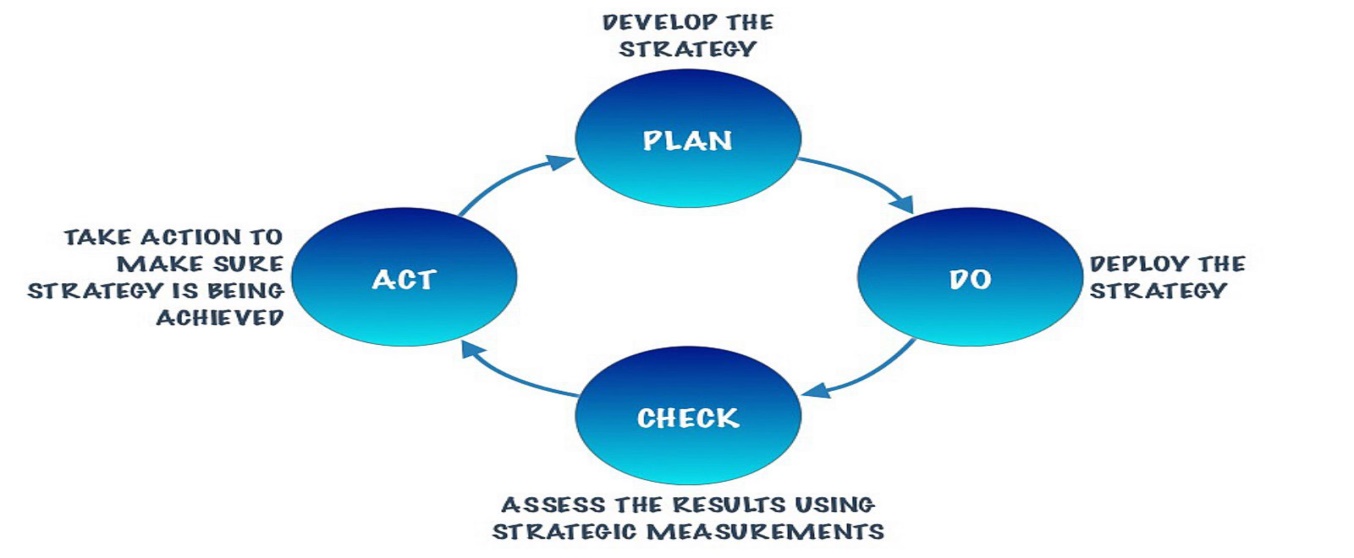Continuous Improvement
Continuous improvement can be achieved using PDCA cycle. This PDCA cycle also known as the Deming Cycle, was made popular and promoted by W. Edwards Deming, who is considered to be the father of modern quality management. The PDCA or Deming Cycle is an iterative four-step management method for the continuous improvement of processes, products, and services, i.e., for continuous quality improvement.
Repeating the PDCA cycle will bring an organization closer to achieving its goals and objectives. The PDCA method emphasizes that continuous quality improvement must start with careful planning, must result in effective action, and must move on again to careful planning in a continuous cycle.
The circular nature of the cycle model, with its built-in pauses for evaluation and adjustment, provides ample and necessary opportunity for feedback and discussion. Improvements are measured and documented, and overall business progression is thoughtful.

This cycle consist of 4 stages.
- PLAN -
Establish objectives and processes necessary to deliver results in accordance with targets or goals. - DO -
Execute the plan and implement the processes. Collect data for analysis in the following steps. - CHECK -
Analyze the actual results and compare against the expected results Determine any differences. Look for deviations from the plan. - ACT -
Identify corrective actions in cases where differences exist between actual and planned results. Determine areas in which to apply changes and improvements.
